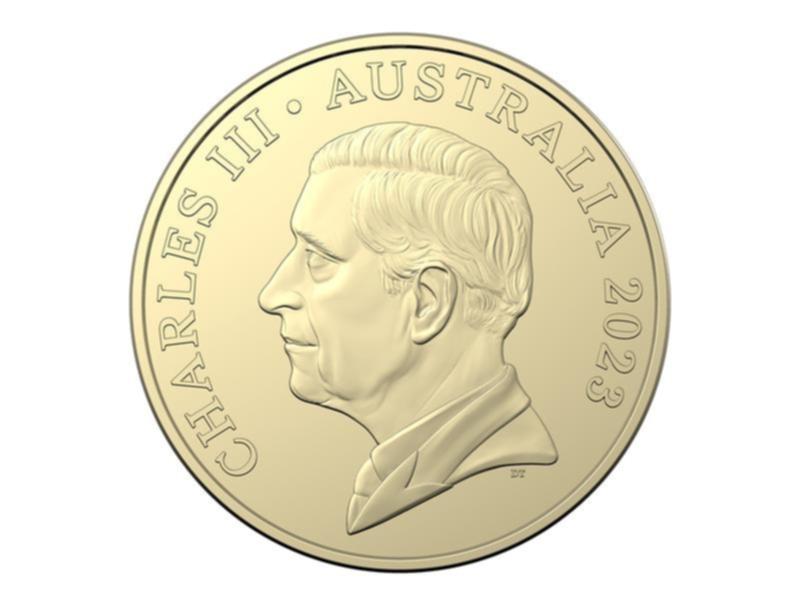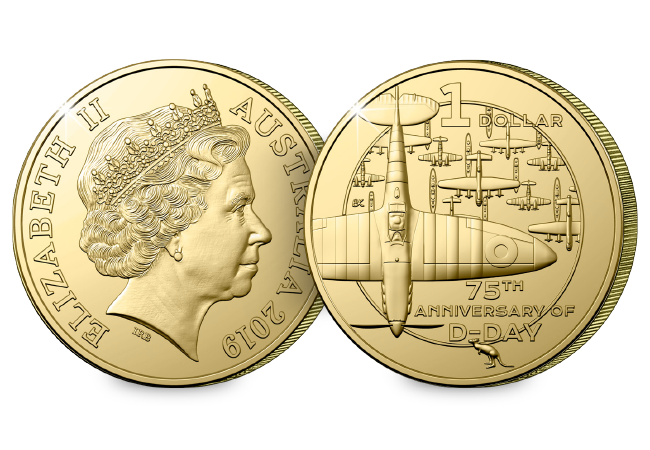Posts Tagged ‘Australia’
Australia’s New King Charles III Coin Effigy Revealed!
More than a year after the death of Queen Elizabeth II, The Royal Australian Mint have officially announced the release of their first coins featuring King Charles III.
For the first time in 70 years, and after more than 15.5 billion coins were minted with the face of the late Queen, the Australian $1 coin will feature an effigy of the King.

Credit: AAP
The King’s image
The King’s image that features on these brand new $1 coins will be the official Commonwealth effigy, available for use by all British Commonwealth countries. As with all official portraits of reigning monarchs, the new effigy has been personally approved by King Charles III.
As with our UK coins, this new Australian $1 coin sees the monarch facing the opposite direction to his predecessor, Queen Elizabeth II.

Credit: The Perth Mint
A major change for Australian Coinage
During her reign, six effigies of Queen Elizabeth II have featured on Australian coinage, however the latest change was only 5 years ago. From 1998 to 2018, with the exception of 2000, it was Ian Rank-Broadley’s effigy that featured on Australian coinage.
In 2018, a new effigy of the Queen by Jody Clark was approved and made it’s way onto Australian coins in 2019.

Considering that the Queen Elizabeth effigy only changed fairly recently, the introduction of King Charles III is sure to cause a huge shake up in Australian coinage.
How many will enter circulation?
The final mintage figure of the 2023 Australia $1 is yet to be confirmed, however, The Royal Australian Mint have announced that an estimated 10 million will be circulating by Christmas.
Most Australians will never have held a circulating coin featuring a King on the obverse, so this new issue is guaranteed to attract the attention of not only collectors, but anyone who regularly uses coinage.
The $1 is the only denomination to feature His Majesty at the moment, however The Royal Australian Mint have said that the $2, $5, 10 cent, 20 cent and 50 cent coins will be released gradually next year.
When will we see the King on UK coinage?
Although we’ve already seen the King’s effigy on commemorative UK 50p, £2 and £5 coins since the Queen Elizabeth II Memoriam coin range last year, it’s just been announced that all UK coins are set to change. As the full range of circulating coins from the 1p to the £2 will not only feature the King, but are also set to receive brand new reverse designs.
As perhaps the biggest change we’ve seen to UK coinage in decades, we’re expecting a huge collecting rush for the New UK Coinage for King Charles III and can’t wait to see the new coins when they’re released.
Keep an eye on our social media and website as we’ll be updating you as soon as we have more information on these exciting new coins.
Queen Victoria – Around the World on Coins…
Cast your imagination back to the 19th century… Queen Victoria ruled 400 million people in an empire that covered almost a quarter of the world’s surface!

With a name and title famous across the globe, it may come as a surprise to you that Queen Victoria never actually stepped foot in many of the countries she ruled over.

India was held with such high regard in Victoria’s heart that it became known as the Jewel in the Empire’s crown. In 1876, India awarded her the title of ‘Empress of India’ in a gesture of appreciation.
Although having never stepped foot in the country and living 4,500 miles away, Victoria’s portrait was minted on to the currency of India (the rupee) from 1840, so people could recognise their empress!
The rupee is one of the oldest currencies in the world, so to feature a British monarch for the first time was an important moment in numismatic history.

The later portrait issued on rupees, similar to the Gothic Head effigy, can be considered one of the most beautiful coins of the empire.

A 22hr flight to Australia seems a long journey now but for Queen Victoria, a trip to this corner of the world would have taken her almost two months to get there!
So, there’s no surprises this was also a country that she never visited. However, the need for a British presence in the country was growing with the empire; as the empire grew, so did the need for coins. The Royal Mint opened branches in Australia and in 1855, a sovereign was minted outside of the UK for the first time – the Sydney sovereign.

It featured a portrait of Victoria that was based on the Young Head effigy, but with a sprig of banksia weaved through Victoria’s hair, giving the portrait a distinct Australian feel.
The Sydney sovereign became incredibly successful and a number of Royal Mint branches were opened throughout Australia as a result. To identify the Mint that sovereigns were produced in, mintmarks were added to the coins, with a small ‘P’ for Perth, and an ‘M’ for Melbourne.

The sovereign became legal tender in the majority of British colonies in the 1860s, and its importance in British trade, and worldwide circulation earned it the title “the King of Coins”. By the final years of the British Empire, the sovereign was minted in four continents across the globe.
India and Australia weren’t the only countries that saw Victoria’s portrait. Her image also reached as far as Hong Kong, Ceylon, East Africa and New Zealand. In 1870 the first Canadian dollar with Victoria’s portrait was issued, taking Victoria’s image to a new side of the world for people to see.
Despite never leaving Europe, Queen Victoria’s portrait and image stood strong on coins around the world. Whilst she never stepped foot in many of the countries that she ruled over, that didn’t stop people recognising her image around the world.
The coins that they used every day provided a link to the empire that they were a part of, despite the miles between them.
If you’ve found this blog informative and have enjoyed reading, let us know in the comments below!
Secure the 2019 UK 200th Anniversary of the Birth of Queen Victoria £5 for your collection!

Your £5 coin has been struck to a superior Brilliant Uncirculated quality and is protectively encapsulated in official Change Checker packaging to ensure that it is preserved for generations.
To secure yours for JUST £10.99 (+p&p) click here >>
D-Day commemorated by four world-renowned Mints
On 6th June 1944, the D-Day Landings turned the tide of the Second World War. Allied troops landed at five different beaches, famously codenamed: Utah, Omaha, Gold, Juno, and Sword.
At these beaches, the largest amphibious assault in history was launched and this attack paved the way for the liberation of German-occupied France and is largely considered the start of the victory on the Western Front.
Most UK collectors will be familiar with the United Kingdom 75th Anniversary of D-Day £2 coin issued in 2019 to commemorate the historic event. However, Allied Nations across the globe have been commemorating this important anniversary with unique coin issues from their very own Mints.
Today, we will be looking at the extraordinary coins issued by Australia, Canada and Belgium, in addition to the UK £2, that have been brought together in a strictly limited presentation pack.
United Kingdom £2
Over sixty-one thousand British Troops were deployed as part of the D-Day Operations, landing on the 6th June at Gold and Sword. What’s more, by 1944 over 2 million troops from over 12 countries were in Britain in preparation for the invasion.
To commemorate Britain’s great effort in opening up this second front against the German army, The Royal Mint issued a United Kingdom £2 coin for 2019.
This coin was produced in collaboration with Imperial War Museums and was designed by Stephen Taylor. Speaking about his work on the design, Taylor emphasises that he wanted to ‘build up the scale of the operation’ and that the ‘fonts are inspired by markings on US, Canadian and British landing craft, capturing the spirit of the international cooperation.’

Canada $2
Operating within the British command structure, Canadian troops provided the third largest force for Allied operations in Western Europe. Landing at Juno, between British troops at Gold and Sword, over 21,000 Canadian troops were involved in the D-Day Landings.
The Canadians played a crucial role in the action that effectively ended the Normandy campaign a few months later, cutting off German forces at the Falaise gap.
To commemorate such a huge achievement, The Royal Canadian Mint issued a $2 coin, following their proud tradition of honouring Canada’s rich military history with commemorative $2 coins.
The design, by Alan Daniel, features unique touches of selective colour to honour this most special anniversary.

Australia $1
On D-Day, over 2,000 Australian airmen took part in the battle of the skies above the invasion beaches, in addition to 500 Australian sailors serving in the escort fleets.
Notably, Australian officers held places in various British units throughout the campaign, gaining experience of British practises which they could then take home after the war.
Designed by Bronwyn King, the intricate design on this Australian $1 shows a flight of planes all heading in a single direction, with an Australian Kangaroo featured at the bottom.

Belgium 5 Euro
Although there are few recorded Belgium troops on 6th June D-Day Landings, Belgium soldiers played a key part in the Battle of Normandy, which followed the initial D-Day Landings operation.
What many people also don’t know is that the exiled Belgium government in the UK raised its own units in Britain, and Belgium pilots flew in the RAF.
Designed by Luc Luycx, this remarkable 5 euro features a map of Normandy with arrows pointing across to the beaches where troops landed on D-Day. The reverse of the coin shows a map of Europe with ‘Belgium’ in the country’s three languages: French, Dutch and German.

A total of 156,000 Allied Troops took part in the D-Day Landings from across 12 countries – it truly was an international effort!
75th Anniversary of D-Day Allied Nations Coin Pack
To commemorate this most important anniversary year, Change Checker have brought together these four remarkable coins from four world-renowned Mints to create the Change Checker 75th Anniversary of D-Day Allied Nations Coin Pack.


